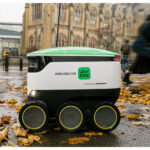
Imagine having a doctor fix your vertebrae while they’re standing in another room directing a robotic arm, much like you would handle a player in a video game. Imagine precision incisions with no blood and little to no after-surgery pain. This scenario is the new playing field in medicine.
Medical technology is advancing in leaps and bounds thanks to robotic technology.
Robotics is not something new, but as robots become more capable and precise, experts in the medical field are focusing on these tools as better options to improve medical outcomes.
So without further ado, here are the top three advancements you may see or soon see in medical robotics which will make a difference in your life or the life of someone you love.
Robot-Assisted Surgery
We begin with the most common medical robot, the robot-assisted surgery machine, otherwise known as RAS. A doctor controls a robot or medical tool to perform surgery. The tool or robot performs tiny incisions, which means there is less intrusion, less bleeding, and faster healing for the patient.
The technology has been available for decades, with a steady increase in how common RAS systems are in the operating room. The technology continues to advance and have more autonomous features and increased abilities.
Pharmabotics
Robotics also offers pharmaceutical systems solutions. Robotics are completely changing pharmaceuticals as they help organize and select inventories in a flash. Robotic systems classify count medications and hand out the prescriptions as necessary.
The prototype pharmacy at the University of California has worked flawlessly for five years, and more are now in the process of approval for hospital use.
Robotic Nurses
Nurses are an important part of the medical field, but their job is difficult and they are overworked. Robotic nurses are not meant to take the place of a human nurse, but instead to help with some of the more routine and heavy tasks like moving patients, delivering food trays, taking vital signs, or monitoring a patient’s vitals. The robots help save nurses time so they can focus on better care for their patients.
AI Diagnosis
This is an area where robots play an important role. Doctors use machine learning to help robots perform tasks better than humans. For instance, new facial recognition software can screen patients for thousands of diseases and rare genetic disorders.
Then there is the AI system that scans thousands of records to pinpoint conditions or genetic similarities that could cause people to be at risk of heart failure, stroke, diabetes, and more.
Every year, robotics and data-driven technology add more viability to medical procedures. They help doctors avoid the human error factor, and the data gives medical professionals the information they need to make adequate diagnoses and treatments for patients.
Discover more from TechBooky
Subscribe to get the latest posts sent to your email.







